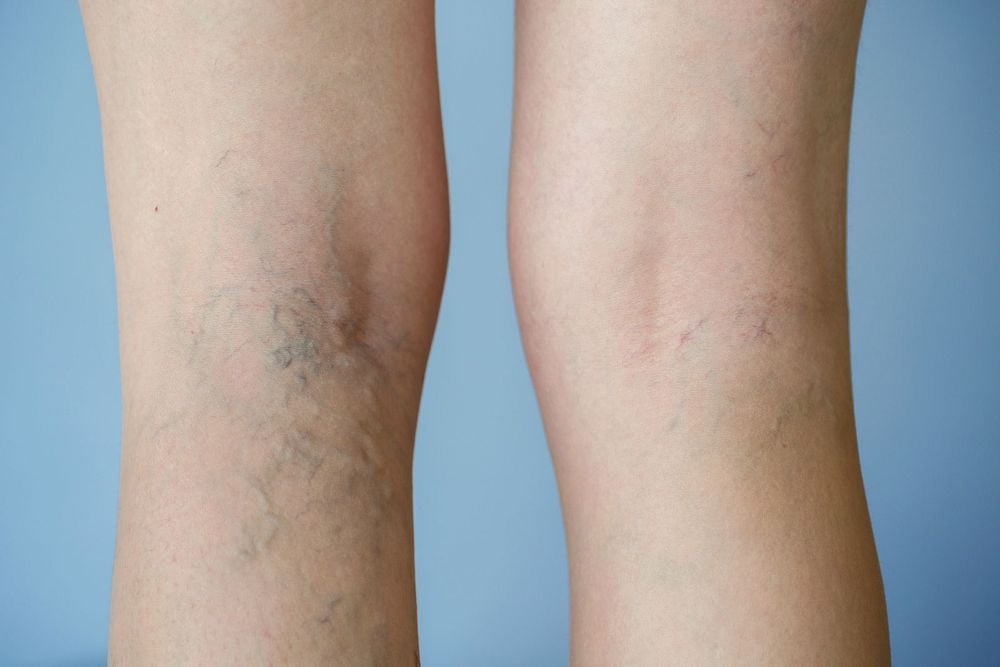This is an automatically translated article.
The article was professionally consulted by Specialist Doctor I Tran Cong Trinh - Radiologist - Radiology Department - Vinmec Central Park International General Hospital.
Lower extremity computed tomography angiography is an accurate and highly effective imaging technique in detecting lower extremity vascular diseases.
1. What is lower extremity artery disease?
Arteriopathy of the lower extremities is a pathological condition of the aorta and the arteries of the lower extremities in which the lumen of the artery is narrowed causing decreased perfusion of the muscles and related organs (skin, nerves) downstream. Muscle ischemia will lead to anaerobic metabolism, increased lactic acid causes pain, initially appearing during exertion, later, pain even at rest, accompanied by ischemic manifestations such as: dystrophy, ulceration, necrosis.The main cause of lower extremity artery disease is atherosclerosis. Risk factors for atherosclerosis include:
Age (common in ages 55-60); gender (male/female = 3/1); Cigarette; Diabetes mellitus; hypertension; Dyslipidemia; Increased homocysteine levels in the blood.
2. Varicose veins of the lower extremities
Varicose veins of the lower extremities is a decline in the function of the veins in the legs to return blood to the heart, leading to blood stagnation, which will cause hemodynamic changes and deformation of the surrounding tissues. around. Varicose veins of the lower extremities are associated with a number of risk factors due to impaired function of the one-way valves of the peripheral venous system. Symptoms of varicose veins in the lower extremities are pain, heaviness in the legs, and the phenomenon of leg cramps at night. Complications of varicose veins may follow: Leg ulcers, eczema, superficial varicose veins; superficial thrombophlebitis...
Nhức mỏi chân, nặng chân, có hiện tượng chuột rút vào ban đêm là triệu chứng thường thấy của suy giãn tĩnh mạch chi dưới
3. What is lower extremity computed tomography?
Computed tomography of the lower extremities is a technique consisting of cross-sectional layers with intravenous iodinated contrast injection from the level of the iliac junction to the end of the toe. Then, doctors will use specialized software to process data, reconstruct images of the lower extremity artery system in all directions.Computed tomography of the lower extremities is often indicated for the next generation of multi-slice tomography, preferably 64 sequences or more because of the requirement for fast cutting to keep up with the hemodynamics of iodinated contrast agents. blood vessel lumen.
3.1. Indications for computed tomography arterial angiography of the lower extremities in patients with acute and chronic arterial occlusion. Patients with aneurysms, vascular malformations. Check after stent placement. Evaluation of normal anatomy and abnormality of lower extremity arterial system 3.2. Contraindications to lower extremity computed tomography angiography There are no absolute contraindications. Contraindications for intravenous iodine contrast agents, patients with a history of allergic disease such as bronchial asthma, liver failure, kidney failure, especially in patients with a history of allergy to iodinated contrast agent.
4. Preparing for lower extremity computed tomography
4.1. Performer Specialist Doctor Electro-optical technician Nursing 4.2. Equipment Angiography machine, broken patients (from 8 rows or more) Dedicated electric pump Film, image storage system 4.3. Medical supplies Syringe 10; 20ml Syringe for electric pumps Needle 18-20G Water-soluble Iodine contrast agent Skin and mucosal antiseptic solution Distilled water or physiological saline Gloves, cap, surgical mask Bean tray set , surgical forceps. Cotton, surgical gauze. Indispensable medical materials are drug boxes and emergency equipment for contrast-enhancement accidents. 4.4. Patient Patients will be thoroughly explained about the procedure to coordinate with the physician. - Remove earrings, necklaces, hairpins, if any. You need to fast, drink before 4 hours. Can drink no more than 50ml of water. The patient is too excited, cannot lie still: Need to give sedation... 4.5. Test card There is an order card for computed tomography of the lower extremity arteries
Bệnh nhân sẽ nhịn ăn trước đó 4 tiếng, uống không quá 50ml nước
5. Steps to perform lower extremity computed tomography
5.1. Set up machine parameters Enter complete patient information. Twist cut cutting layer thickness: 0.5 mm or 0.625 mm depending on the machine. Kv: 120, mAs: 150- 250. Pitch 0.6 – 1.375 Set ball speed 0.33 – 0.5s FOV: choose as small as possible 5.2. Patient position Patient lies supine, legs towards the chassis, arms raised to the head, legs stretched naturally, two big toes tied for fixation. Placement of venous catheters: Placed in the veins of the upper extremities. In some cases, it can be placed in the jugular vein, the subclavian vein. 5.3. Perform computerized tomography of the lower extremities Step 1: Conduct oriented cutting in two vertical and horizontal planes Step 2: Cut 5mm thickness before the drug to locate the end of the abdominal aorta to place a point density measurement for Bolus timing program. Step 3: Cut after injection starting from the iliac junction to the end of the toe. 5.4. Image construction After performing computed tomography of the lower extremity arteries, doctors will use specialized software (MIP, VR...) to reconstruct images of the arterial system in all directions, with priority given to the location of the lesion. love.5.5 Evaluation of results Image results show anatomical vascular structures in the examination area Detect lesions if any Conclusion: In the techniques related to lower extremity angiography, microscopic tomography Lower extremity arteriosclerosis is an accurate diagnostic imaging procedure that effectively aids in the detection of lower extremity vascular diseases.
Any questions that need to be answered by a specialist doctor as well as customers wishing to be examined and treated at Vinmec International General Hospital, you can contact Vinmec Health System nationwide or register online HERE.
MORE:
Computed tomography - the gold standard in diagnosing coronary heart disease Coronary artery disease: Symptoms, causes and treatment in Vinmec Intravascular Ultrasound (IVUS) - An effective "assistant" help in interventional treatment of coronary artery disease













